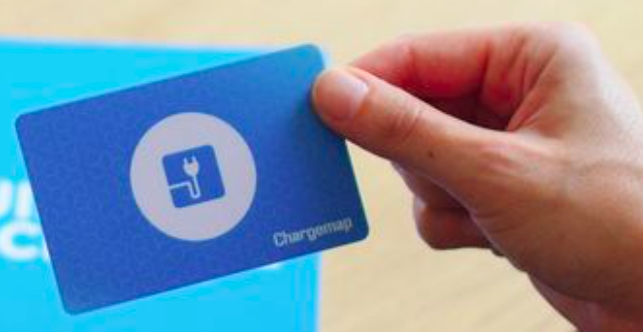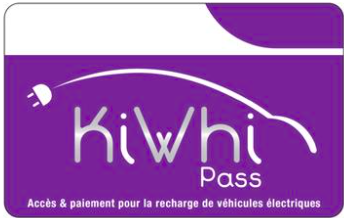France at its Electric Best: Advice from Australia
Heidi and I had planned a grand European adventure in 2020, but Covid killed it. So when the borders reopened we reactivated for 2022.
Little did we know that we’d receive a French education about #hacks #Apps #EVAdventures and #realsavings, so I thought that I’d share our experience and our learnings.
We reactivated our 2020 plan in 2022, however, we still experienced some Covid travel trauma.
- The airline cancelled our deferred bookings due to the war in Ukraine.
- Airfares were much higher and travel insurance excluded Covid cover.
- Moving between countries involved various entry permits and vaccination certificates.
- Also, there were new restrictions for accessing restaurants, theatres and museums.
Our EV Adventure in France
We lowered the stress by deciding to spend twelve weeks in France alone. We would drive about 6000 kilometres over twelve weeks and avoid big cities. This meant visiting small villages, lots of hiking, cycling and great food. Of course, we needed a car and the thought of an Electric Vehicle (EV) didn’t enter the plan.
Then I discovered some specialised advice on hiring EVs in France. We were sold on the advice that EVs are 10% cheaper to rent and charging is about 20% of the cost of petrol. So we ordered a small to mid-sized Nissan EV with a 250km range and here began our very first EV adventure!
Before Leaving Australia for France
Here is what we learned and did before we went. There are many operators offering thousands of recharging stations throughout France; even in many small villages. We needed a recharge card (like a credit card) in order to access these stations. Luckily the cards of either of the two biggest operators give access to almost all recharging stations in France. They are Chargemap and KiWhi pass.


We signed up online and both companies delivered our re-charge cards to Australia within two weeks.
And we downloaded the Chargemap and KiWhi apps to our phones and activated them. Then we set up payments noting that each app is different. Chargemap links to a credit card debited monthly. KiWhi pass requires Euros deposited in advance and is debited on each use. We could top up online at any time.
Alternatives to using EV Apps Overseas
Using Apps with overseas roaming could be very expensive. The main alternatives were:
- Major Australian mobile companies provide overseas phone usage with your full Australia functionality for a daily fee. I use Vodafone in Australia and paying an extra five dollars per day gives full access to Vodafone and partner networks in Europe. I could use my data allocation for driving directions using Google maps.
- We could have bought a local SIM and data plan on arrival, which could have been cheaper. However, it would require some effort to navigate the French language and systems. It would also mean a new phone number while in France.
EV Adventure — think carefully about the range
When we arrived at Paris CDG our customer service lady was horrified. “You’re doing what?? Driving how far! With that car?! Have you ever driven an EV before?”
She explained that EVs have a manufacturer’s advisory travel range but driving on motorways at high speed isn’t recommended. Travelling at the 130kph limit on a motorway would deliver around 70% only of the advised range. Driving slowly along country lanes we could get 10-20% better.
After a long discussion, we upgraded to a larger Hyundai Kona with a 500 km range and left wondering if we had been duped into a pricier upgrade.
Our experience with an EV in France — advice



We first stayed in Senlis, a historical town forty kilometres north of the airport. Our first planned recharge would be 150 kilometres away in Epernay. The apps showed two available recharge stations, one in the heart of town. The other was a handy five kilometres away in the village of Champillon.
We found the process generally went like this:
- Check each app to find the map of all the available recharge stations at the destination and their charge speed capacity. They also indicate the optimum route and charging points along the way. This is especially useful when you don’t have your car fully charged at the start of the day. We often stopped for lunch while we recharged and happily stumbled upon many interesting places.
- The apps advise if the station is free, so it is important for everyone to log their start and end times to ensure the app is giving everyone a true picture of the availability.
- There are many types of charge stations but the process was basically the same for all. The challenge was finding the location of the card reader. However, finding it and swiping it released the door to the charger cable connection point on the station.
- Then the lights on the station will flash green indicating the station is available and working. If it flashes red either your card is not working or is unauthorised or the station is malfunctioning.
- Your car comes with a selection of cables for use with charge stations or home PowerPoint access. Connect the cable from your car to the station charge point. Flashing blue or purple lights on the station and your car indicate it’s charging.
- Our car’s dashboard indicator gave an estimate of the time required for a full charge. However depending upon the time of day, charge speeds can vary dramatically, as may cost. Midday sessions were frequently expensive and typically slower. Overnight charging was the cheapest.
Over the course of the first four weeks, we travelled to remote places down the Rhone Valley, through Les Cevennes, Les Pyrennees and the Massif Central. We had no trouble finding charging stations but beware of France’s many public holidays.
One long weekend we planned to visit Etretat in Normandy and then make a long drive south to Brittany. There were people everywhere and all the charge stations were occupied. After several failures to find a free station in the region, our available battery was 50km and we suffered a massive “range anxiety” attack.
Our only option was to leave the coastal tourist crowds and head for a remote village inland. We located a tiny village with no shops but it did have a recharge station available. Clearly, we had done the right thing by upgrading to a longer-range vehicle, if not we would have been stranded for the weekend.
EV Adventure in France — reflections
On the plane home, we chatted about the many highlights of our trip and especially about the success of our EV adventure. It’s fair to say our research and planning paid off because:
- EVs are wonderful to drive, quiet and with high performance on the open road.
- The cost to run the car over twelve weeks and 6,000 kilometres was eighty per cent less than a petrol vehicle.
- A car with a range greater than your planned longest driving day was essential. We avoided long travel days by not stopping mid-trip for hours.
- The two charge card options were essential. Occasionally one card was inexplicably rejected but the other worked.
We also discovered a #travelhack. Public parking was often full but we found we could often park and charge in the heart of the places we visited.
Would we change anything? Yes, we’d find a place to stay rather than travel any significant distance over a holiday weekend.
Would we do it again? Absolutely and as soon as possible!
Have you ever had an EV experience in France? We’d love to hear from you in the comments below.
- Craig Healey is a new Contributor to My FrenchLife Magazine – please help me make him welcome by commenting and asking questions:
- Soon, we will start to publish a new 12-part series by Craig called ‘French Adventures: Off the beaten track in France’, a detailed trip of discovery around France.
- Come with Craig to discover 12 regions/ areas including his highlights and hidden gems. Importantly this series has a focus on Walking, Cycling and Touring – so get out your notepads and digital lists!







great advice craig. agreed staying somewhere when busy on roads would reduce range anxiety, which I know well. 80% saving makes it all so worth the effort, let alone the warm and fuzzy feeling of helping save the planet. good work!
Was so pleased to read this article. We are travelling to France in October, driving around the Cevennes. We opted for a petrol car this time as we were unsure of how an EV would work for us, given that we intend to go off the tourist track. Thanks for relating your experiences, we will definitely look into this for our trip in 2024.